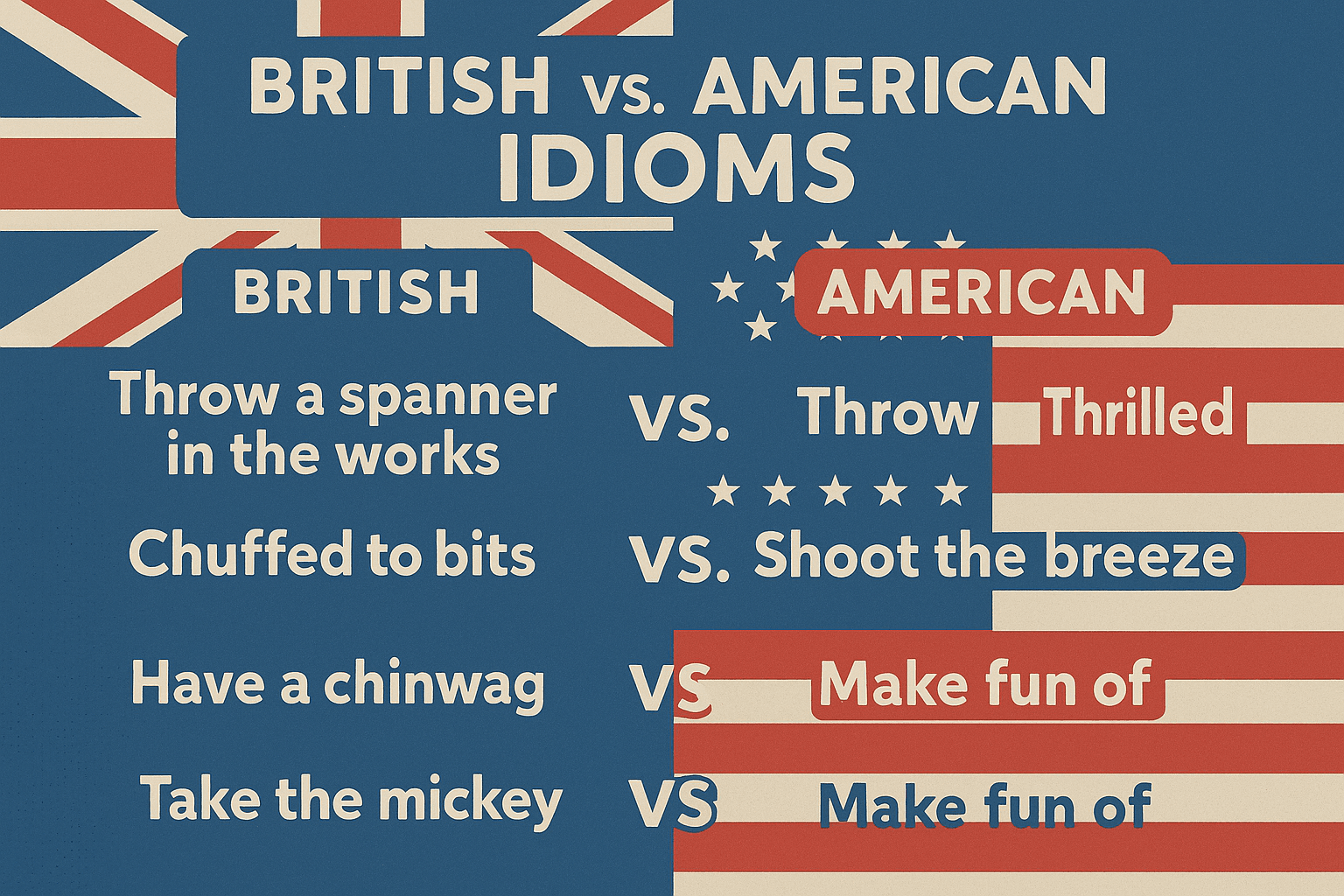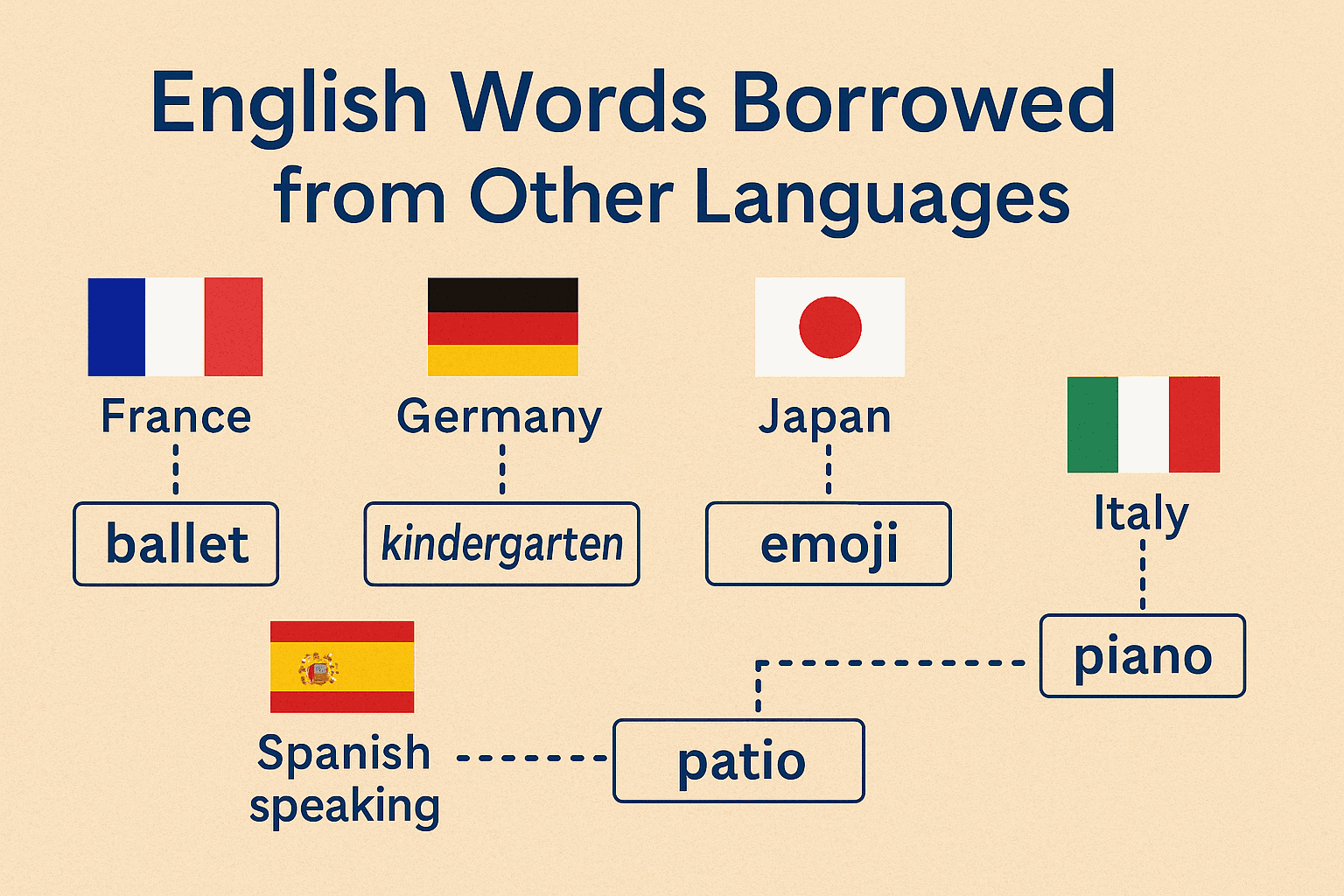English is spoken across the world, but that doesn’t mean everyone who speaks it uses the same expressions. Nowhere is this more evident than in the differences between British and American idioms. While the two versions of English share the same foundation, their idiomatic expressions often diverge in surprising and sometimes confusing ways.
In this post, we’ll explore some of the most common idioms used on either side of the Atlantic and how their meanings—and even their usage—can differ.
Why Idioms Matter in Understanding Language
Idioms are more than just fun phrases. They offer insight into cultural identity, humor, and even values. Understanding idioms helps learners of English sound more natural and connect more deeply with native speakers.
But what happens when two groups of native speakers use completely different idioms—or the same idiom with a different meaning?
Let’s find out.
Common British Idioms and Their American Counterparts
Here are a few British idioms with American equivalents—or, in some cases, no equivalent at all.
1. “Throw a spanner in the works” 🇬🇧
Meaning: To cause a disruption or delay in a process.
American equivalent: Throw a wrench in the works.
While both idioms mean the same thing, the tools are different—spanner in the UK, wrench in the US. It’s a small change, but it highlights how vocabulary varies.
👉 For a deeper look into British idioms, visit BBC Learning English – The English We Speak.
2. “Chuffed to bits” 🇬🇧
Meaning: Extremely pleased or happy.
American equivalent: There’s no direct idiom, but Americans might say “I’m thrilled” or “over the moon.”
British idioms often carry a uniquely charming tone that doesn’t always translate literally or emotionally.
3. “Shoot the breeze” 🇺🇸
Meaning: To have a casual conversation.
British equivalent: Have a chinwag.
Both idioms mean the same thing but are used in completely different cultural contexts.
4. “Take the mickey” 🇬🇧
Meaning: To tease or mock someone.
American equivalent: Make fun of someone.
This is a good example of a British idiom that can leave Americans puzzled.
When Idioms Cause Confusion
Even fluent English speakers can struggle with idioms that are regional or culturally specific. Imagine an American hearing, “I’m chuffed” and assuming someone is angry, when in fact they’re delighted.
This is where context and exposure become essential for understanding idiomatic English.
Fun Fact: Some idioms exist in both British and American English, but with different meanings!
- “Quite” in British English often means “somewhat,” while in American English it can mean “very.”
- “Momentarily” in the UK means “for a short time”; in the US, it means “in a short time.”
Language is slippery—and idioms are often the slipperiest part.
Why the Differences Exist
Idiomatic differences are largely due to historical and cultural development. After the US became independent, American English evolved in isolation, borrowing influences from Dutch, German, and indigenous languages. Meanwhile, British English continued to evolve alongside European influences.
Add in decades of TV, music, and literature, and it’s no surprise that idiomatic usage diverged.
The Role of Media in Blending Idioms
Thanks to globalization, many idioms cross the ocean through media. American TV shows, movies, and pop culture have made expressions like “break a leg” or “kick the bucket” familiar to British audiences—and vice versa.
For example, British series like The Office (UK) or Downton Abbey introduced viewers around the world to phrases like “faffing about” or “bloody hell.”
If you’re curious about British vs. American slang in film and pop culture, check out this entertaining video from BBC America.
Tips for Language Learners
If you’re studying English and want to master idioms from both sides of the Atlantic:
- Watch content from both cultures: Mix BBC dramas with American sitcoms.
- Use idiom dictionaries like The Free Dictionary’s Idiom Section to compare usage.
- Practice with native speakers online via platforms like italki or Tandem.
- Keep an idiom journal: Write down new phrases and their meanings.
Final Thoughts: Embrace the Diversity
The differences between British and American idioms can be confusing, but they’re also what make English so rich and flexible. By understanding the idioms unique to each culture, you’ll not only improve your fluency but also deepen your appreciation for how language evolves.
Whether you’re having a chinwag or shooting the breeze, getting chuffed or thrilled, the important thing is to keep exploring language and its many colorful quirks.
And remember: Don’t throw a spanner in your own works—enjoy the ride!




